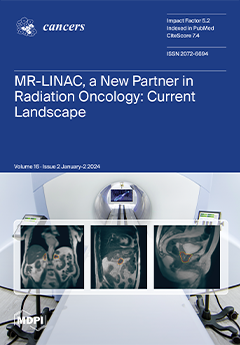Objectives: About 90% of all non-small cell lung cancer (NSCLC) cases are associated with inhalative tabacco smoking. Half of patients continue smoking during lung cancer therapy. We examined the effects of postoperative smoking cessation on lung function, quality of life (QOL) and long-term survival. Materials and Methods: In total, 641 patients, who underwent lobectomy between 2012 and 2019, were identified from our single institutional data base. Postoperatively, patients that actively smoked at the time of operation were offered a structured ‘smoking cessation’ program. For this retrospective analysis, two patient groups (total
n = 90) were selected by pair matching. Group A (
n = 60) had no postoperative tobacco smoking. Group B (
n = 30) involved postoperative continued smoking. Lung function (FEV1, DLCO) and QOL (‘SF-36′ questionnaire) were measured 12 months postoperatively. We compared long-term outcomes using Kaplan–Meier curves. Results: The mean age in group A was 62.6 ± 12.5 years and that in group B was 64.3 ± 9.7 years (
p = 0.82); 64% and 62%, respectively, were male (
p = 0.46). Preoperative smoking habits were similar (‘pack years’: group A, 47 ± 31; group B, 49 ± 27;
p = 0.87). All relevant baseline characteristics we collected were similar (
p > 0.05). One year after lobectomy, FEV1 was reduced by 15% in both groups (
p = 0.98). Smoking cessation was significantly associated with improved DLCO (group A: 11 ± 16%; group B: −5 ± 14%;
p <0.001) and QOL (vitality (VT): +10 vs. −10,
p = 0.017; physical role function (RP): +8 vs. −17,
p = 0.012; general health perceptions (GH): +12 vs. −5,
p = 0.024). Patients who stopped smoking postoperatively had a significantly superior overall survival (median survival: 89.8 ± 6.8 [95% CI: 76.6–103.1] months vs. 73.9 ± 3.6 [95% CI: 66.9–80.9] months,
p = 0.034; 3-year OS rate: 96.2% vs. 81.0%,
p = 0.02; 5-year OS rate: 80.0% vs. 64.0%,
p = 0.016). The hazard ratio (HR) was 2.31 [95% CI: 1.04–5.13] for postoperative smoking versus tobacco cessation. Conclusion: Postoperative smoking cessation is associated with improved quality of life and lung function testing. Notably, a significant increase in long-term survival rates among non-smoking NSCLC patients was observed. These findings could serve as motivation for patients to successfully complete a non-smoking program.
Full article






